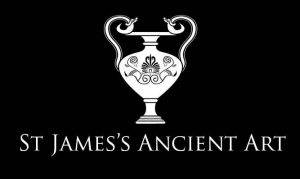Shabtis, also known as ushabtis, are the most numerous of all Egyptian antiquities and they were originally placed in Ancient Egyptian tombs to assist the deceased in the afterlife. Shabtis were often inscribed with titles and names, sometimes including parentage of the person that made them as a part of funerary equipment. Such figurines in mummified form were also inscribed with passages from Chapter Six of Book of the Dead, the intention of which was to secure safety for the deceased in the afterlife. This inscription would have begun, ‘Sḥḏ WsỈr ḥm-nṯr prt-ḫrw….’ (‘The illuminated one, the Osiris, the god, an offering…’).
To discover more about these fascinating objects, please visit our relevant post: Egyptian Shabti: Companions in the Afterlife.





